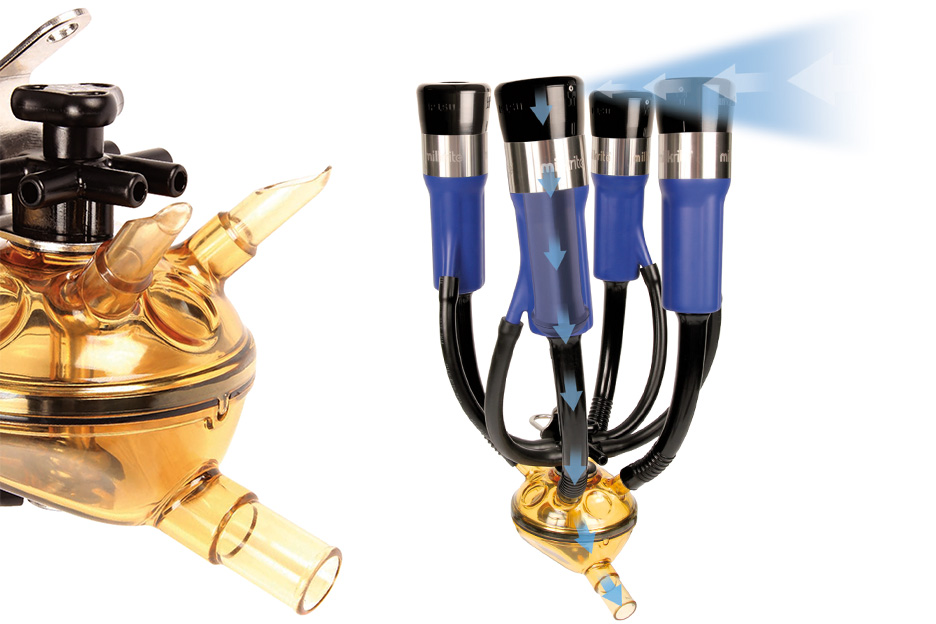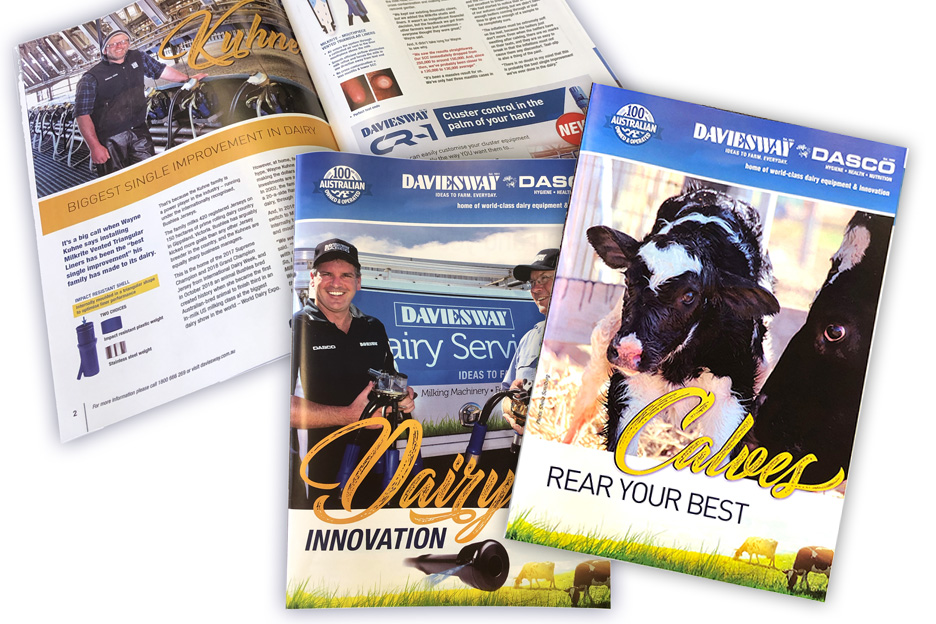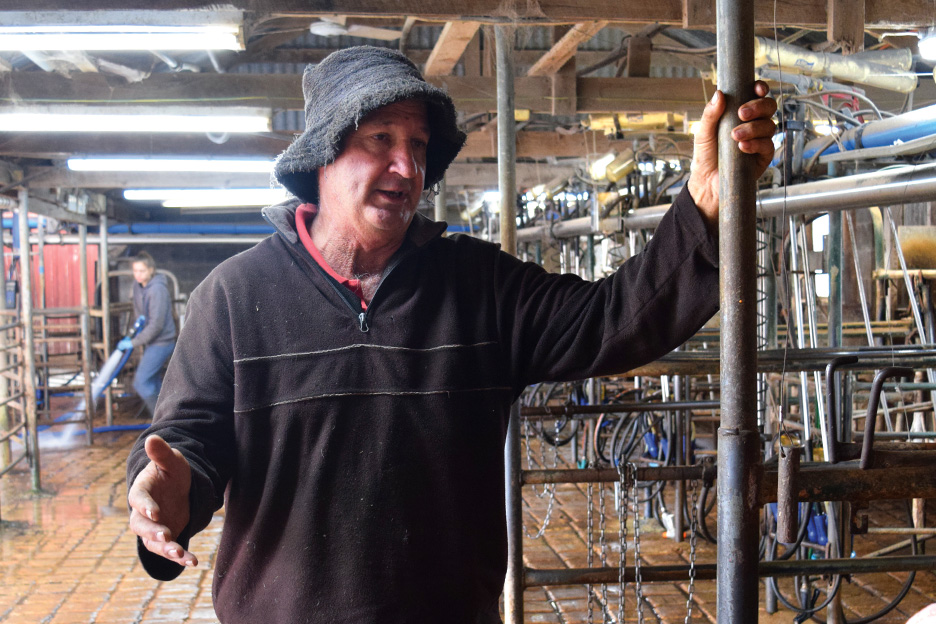
Francis Hawker says his 34-bail walk through dairy is a cost-effective option that milks as fast as a rotary.
Anyone who thinks they have seen everything in dairy configurations, is in for a surprise at Francis and Leanne Hawker’s Victorian operation.
The couple, together with their 27-year-old daughter Tennielle, milked 620 head last season through a 34-bail walk-through dairy at Heywood, near Portland.
And, while most have seen a walk-through dairy, this one takes the conversation to a new level – both for its design – and the number of cows passing through it every day. It has a perpendicular layout – with 20 bails running down one side of the dairy, and an additional 14 located at a right-angle. The unique “L” shape easily puts it into rare territory.

The perpendicular walk-through design allows the cows to choose where and how they enter the dairy. While the individual milking stalls make it easy to also treat or AI cows.
SOUTHERN HEMISPHERE’S BIGGEST WALK-THROUGH
It is also arguably the biggest walk-through dairy in the southern hemisphere. There is one other large walk-through dairy at Dhurringile prison, near Shepparton; it has 24 stalls, but was built in the traditional straight line. It also has plenty of captive staff: four inmates are each responsible for six bails.
For the Hawker family, 34 bails keeps their family and the team of back packers they employ every year, busy getting through milking in 2.5 hours … one cow at a time.
Francis said, “We can milk as fast as a rotary in this dairy, no worries at all. When we had 620 cows, we had four people milking. As soon as a cow’s cups come off, she is released, and she heads off down to the paddock. “If she’s a slow milker, she doesn’t have to go right around the rotary or hold up the whole side of a herringbone. Because, of course, it doesn’t really matter how fast or how slow individual cows milk.”
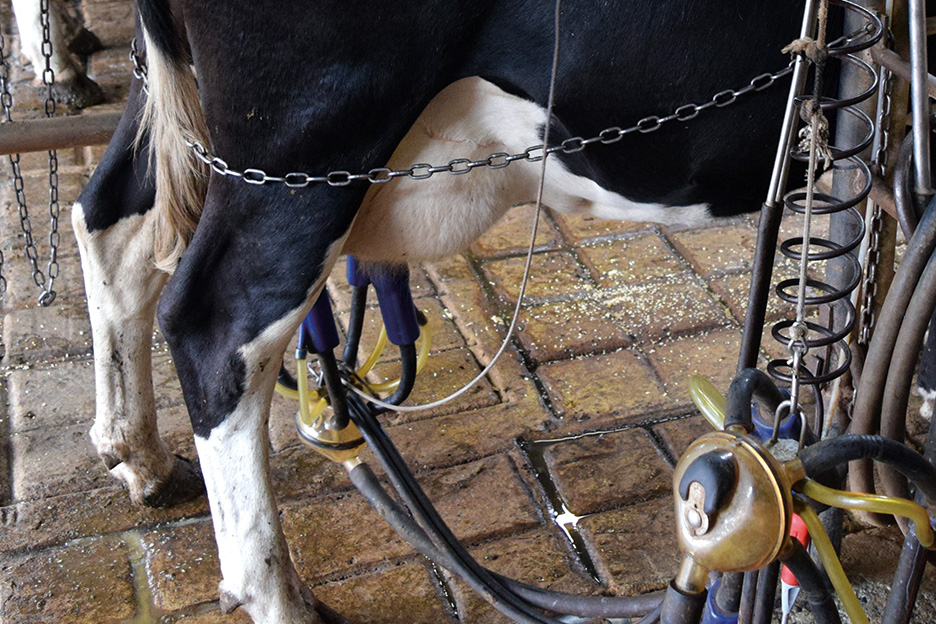
Milkrite's technology has saved the Hawker family from processor penalties.
LOGICAL DECISION
This season the Hawkers have cut numbers in the Jersey, Holstein and cross-bred herd to 450 because of the season. Heading into the autumn, the herd was averaging 27 litres a day on pasture and four kilograms of grain a day.
“We can milk with one person or two now, and we have ACRs [automatic cup removers],” Francis said.
His rationale for building the L-shaped dairy was based on logic and accessibility. They began with eight bails that they built themselves on the-now 405-hectares (1000-acre) property in 1961. They then added six more. Francis made the decision to build another 20 bails in 1998. He felt it was the most cost-effective option, and it gave everyone better access to the cows by running it around a corner.
“And, I didn’t have the big cost for a modern dairy build, did I?” he said. “The 20 bails cost me $70,000 for the entire project. When you look at building a rotary, it’s $1.5-$2million investment, and I didn’t see the sense in that for us.
“They don’t make the cows milk any better, or anything else. And, when we pregnancy test, AI, have a vet visit, or need to drench or treat a cow, a walk-through dairy is fantastic. Because we can do everything in the bail.”
He said as a former shearer and “decent footy player”, his back has surprisingly held up well during a career of additional bending over in the dairy. On top, he said, their herd’s temperament had also thankfully improved.
“Years ago, we had leg ropes on heifers, and they’d still kick you into tomorrow. Now, we don’t even leg-rope a heifer. That’s been a good thing.”
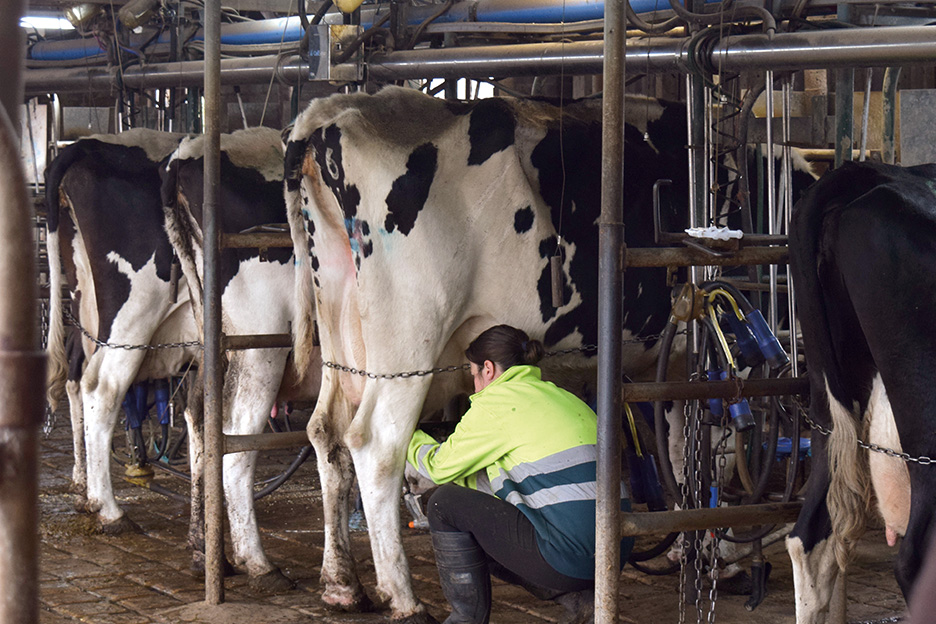
Milking is very individual experience for Francis and Leanne Hawker's herd.
DRAMA WITH BMCC
The one thing that hasn’t always been good news is the family’s bulk milk cell count (BMCC). It ballooned to 750,000 at its peak, and Francis was frustrated and desperately looking for consistent answers.
“There is a dairy farmer who drives our milk truck, and he was saying he’d had trouble too, and he’d changed his clusters and liners to Milkrite, and that it had dropped his BMCC within a fortnight. Sometimes when you hear those stories, you wonder whether it’s true or not?
“But, I was having trouble and I was just sick of it. I’d culled cows and it’d made no difference at all. So, I contacted Agri Dairies and inquired about Milkrite clusters and triangular liners.”
‘NO-BRAINER’ TO USE MILKRITE
Milkrite is the world’s only internally triangular moulded plastic shell with mouthpiece-vented triangular liners. Francis had already proved he didn’t mind doing things a little bit differently. Milkrite’s gentle three-point milking action is now used by 40% of dairy farmers in the United States. As well, the patented design includes a revolutionary air vent in the mouthpiece of each liner.
Importantly, the position of the mouthpiece vent introduces air above the milk-flow, stopping splash-back (and thus lowering the chance of cross contamination between cows). It also makes cluster removal gentler.
“I find a lot of dairy farmers on these farms don’t milk their own cows. I’m here every milking, so I got a really close look at what was going on when we put these new liners in,” Francis said.
“To me, it dropped my BMCC no worries at all back to around the 150,000 to 200,000. It put us back into premium, and I think it will be a no-brainer for everyone to use this technology as the word gets out.
“My BMCC today was 173,000 and our teat-end health is also really good. I’m happy because it’s saved me a lot of headaches.”
Daviesway Contact – Leon Lourey: 0457 847 139 or
Milkrite mouthpiece vented triangular liners – For more information Click here
Download print version – DAVIESWAY / DASCO 2020 Magazine
![]() 02 – Australian Farm stories: Milkrite Triangular Vented Liners
02 – Australian Farm stories: Milkrite Triangular Vented Liners

